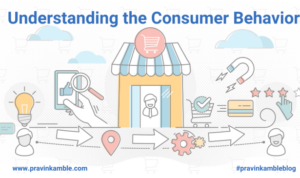Using Surveys for Customer Insights dives into the world of understanding consumer behavior through engaging surveys that provide businesses with valuable data to enhance their strategies and offerings. Get ready to explore the power of surveys in unlocking customer preferences and behaviors.
From designing effective surveys to implementing them strategically and analyzing the results, this topic covers it all in a way that resonates with the high school hip crowd.
Importance of Surveys

Surveys play a crucial role in gathering valuable insights from customers, allowing businesses to make informed decisions based on data-driven feedback.
Data Collection
- Surveys provide quantitative data that can be analyzed to identify trends and patterns in customer behavior.
- They offer a structured way to gather feedback on products, services, and overall customer experience.
Customer Preferences
- Surveys help businesses understand the preferences of their target audience, allowing for tailored marketing strategies.
- By collecting information on what customers like or dislike, companies can refine their offerings to better meet consumer needs.
Behavior Analysis
- Through surveys, businesses can gain insights into customer behaviors, such as purchase patterns and brand loyalty.
- Understanding these behaviors can lead to improved customer retention and increased customer satisfaction.
Designing Effective Surveys: Using Surveys For Customer Insights

Creating a well-structured survey is crucial to gather valuable insights from your customers. The design of the survey can greatly impact the response rates and the quality of the data collected. Here are some tips and best practices to keep in mind when designing surveys:
Well-Structured Survey Questions
- Avoid jargon and technical language that may confuse respondents. Use clear and simple language that is easy to understand.
- Avoid leading questions that may bias the responses. Keep questions neutral and unbiased to get accurate feedback.
- Use a mix of question types such as multiple choice, rating scales, and open-ended questions to gather diverse insights.
- Organize questions in a logical flow to maintain the respondent’s interest and make it easy to navigate the survey.
- Keep the survey short and focused to prevent respondent fatigue and ensure higher completion rates.
Maximizing Response Rates
- Personalize the survey by addressing the respondent by their name and explain the purpose of the survey upfront.
- Offer incentives such as discounts, freebies, or entry into a prize draw to encourage participation.
- Send reminders to non-respondents to increase the chances of getting more responses.
- Optimize the survey for mobile devices to cater to respondents who prefer to take surveys on their smartphones or tablets.
- Thank respondents for their time and feedback to show appreciation for their participation.
Importance of Clear Communication and Simplicity
- Use clear and concise language in survey instructions and questions to avoid confusion and misinterpretation.
- Avoid using technical terms or industry-specific jargon that may alienate respondents who are not familiar with the terminology.
- Keep the layout and design of the survey simple and clean to enhance readability and user experience.
- Provide clear instructions on how to complete the survey and indicate the estimated time needed to finish it.
- Test the survey with a small group of respondents before launching it to identify any potential issues or areas of improvement.
Implementing Surveys
Implementing surveys is crucial for gathering valuable customer insights that can help businesses make informed decisions. One key aspect of implementing surveys is choosing the right distribution methods and strategies to ensure maximum participation and diverse responses.
Different Methods of Survey Distribution
- Email: Sending surveys via email is a common and effective method. It allows for personalized communication and can reach a large number of customers.
- Social Media: Leveraging social media platforms like Facebook, Twitter, and Instagram can help reach a wider audience and engage with customers in a more interactive way.
- Website: Placing surveys on your website or using pop-ups can capture feedback from visitors already interested in your products or services.
Reaching a Diverse Range of Customers
- Segmentation: Tailoring surveys to different customer segments based on demographics, behavior, or preferences can help reach a diverse range of customers.
- Multilingual Surveys: Providing surveys in multiple languages can ensure inclusivity and gather responses from customers who may not be fluent in a particular language.
Incentivizing Survey Participation
- Offer Rewards: Providing incentives such as discounts, coupons, or freebies can motivate customers to complete surveys.
- Contests: Running contests or sweepstakes where participants have a chance to win prizes can increase survey participation rates.
- Exclusive Access: Offering early access to new products, services, or content can entice customers to share their feedback through surveys.
Analyzing Survey Data
When it comes to analyzing survey data, it’s crucial to interpret the results in a way that allows you to extract meaningful insights. This involves looking for patterns, trends, and correlations within the data to understand the underlying factors driving the responses.
Interpreting Survey Results
- Look for common themes or trends that emerge from the responses.
- Identify any outliers or unusual data points that may require further investigation.
- Consider the demographics of the respondents to see if there are any patterns based on age, gender, location, etc.
- Compare results across different survey questions to uncover relationships between variables.
Tools for Analyzing Survey Data
- SurveyMonkey: A popular online survey tool that provides built-in analytics for easy data interpretation.
- Google Forms: Offers basic data analysis features like charts and graphs to visualize survey results.
- Tableau: A powerful data visualization software that can help create interactive dashboards for in-depth analysis.
Importance of Visualizing Survey Data, Using Surveys for Customer Insights
- Visualizing survey data through charts, graphs, and infographics can help make complex information easier to understand at a glance.
- Visual representations can highlight key trends and patterns, making it simpler to communicate insights to stakeholders.
- Interactive visualizations allow for deeper exploration of the data, enabling users to uncover insights that may not be immediately apparent.
